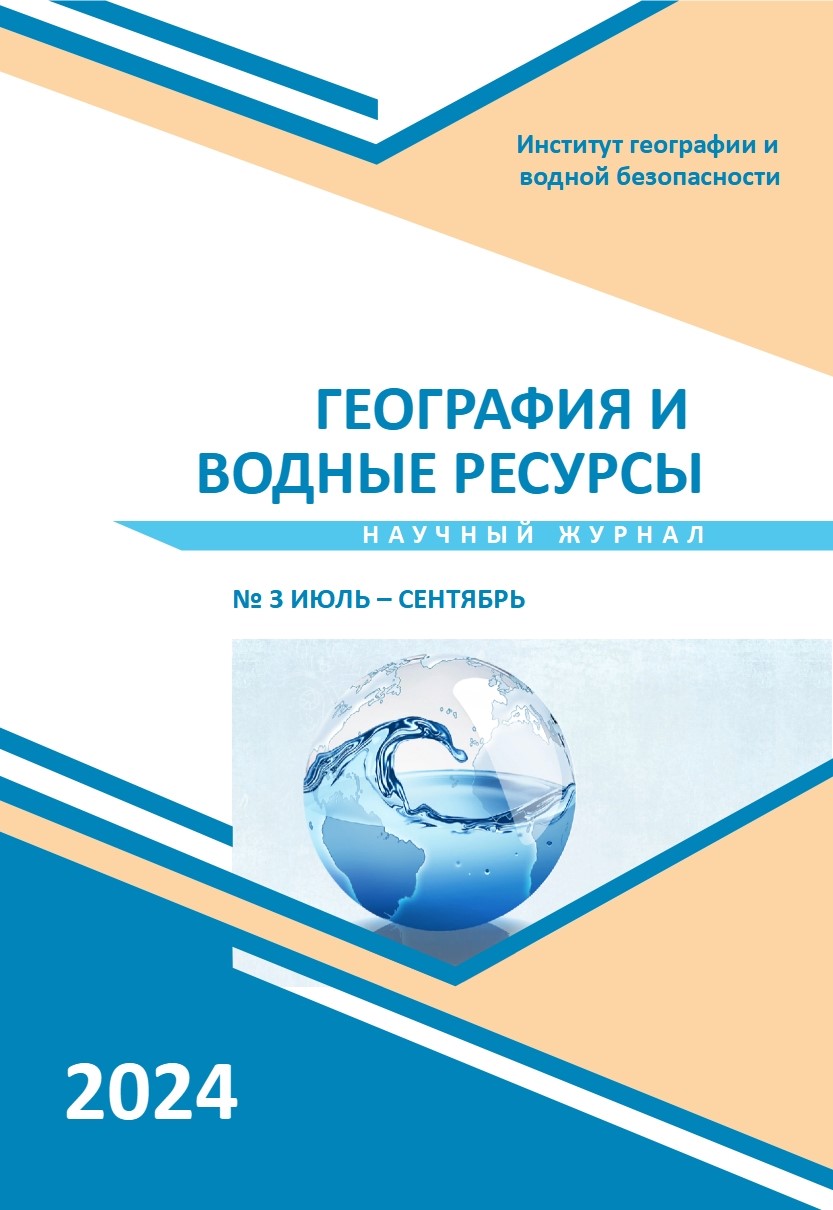ASSESSMENT OF THE MODERN LANDSCAPE STRUCTURE OF THE WEST KAZAKHSTAN REGION
Main Article Content
Abstract
The article presents an assessment of the modern landscape structure of the Western Kazakhstan region, based on the developed map of modern landscapes, made at a scale of 1:1 500,000. Based on the assessment, it was established that in the landscape structure of the entire region, the largest areas are occupied by landscape types of elevated stratal plains (17.8 % of the region’s area) and structural plateaus (14.6 %). Qualitative and quantitative analysis of landscape structure and assessment of dynamic trends in landscape transformation made it possible to establish that within the steppe and dry-steppe zones of the studied region, anthropogenically transformed natural-territorial complexes (NTC) take place in almost all identified types of landscapes and occupy 51.2 and 42.6 % of the NTC area in these zones. Within the natural complexes of semi-arid and arid natural zones, 29.9 and 23.2 % of their area are anthropogenically transformed. On the basis of the regional assessment of the modern landscape structure, environmental standards for anthropogenic loads and approaches to organizing a system of rational environmental management, aimed at the sustainable functioning of natural and economic systems, are developed.
Article Details
References
Преображенский В. С., Александрова Т. Д., Куприянова Т. П. Основы ландшафтного анализа. – М.: Наука, 1988. – 192 с.
Николаев В. А. Проблемы регионального ландшафтоведения. – М.: МГУ, 1979. – 160 с.
Мамай И. И. Динамика и функционирование ландшафтов. – М., 2005. – 137 с.
Сочава В. Б. Введение в учение о геосистемах. – Новосибирск, 1978. – 319 с.
Гельдыева Г. В., Веселова Л. К. Ландшафты Казахстана. – Алма-Ата: Гылым, 1992. – 176 с.
Гвоздецкий Н. А. Опыт классификации ландшафтов СССР // Материалы к V Всесоюзному совещанию по вопросам ландшафтоведения. – М., 1961. – С. 23–24.
Исаченко А. Г. Основы ландшафтоведения и физико-географического районирования. – М.: Высшая школа, 1965. – 324 с.
Солнцев Н. А. Ближайшие задачи ландшафтоведения // Ландшафтный сборник. – М.: МГУ, 1970. – С. 4–9.
Атлас Казахской ССР. – М.: ГУГК, 1982. – Т. 1. – С. 34–56.
Национальный Атлас Республики Казахстан. Т. 1. Ландшафты. Физико-географическое районирование. – Алматы, 2010. – С. 119–149.

